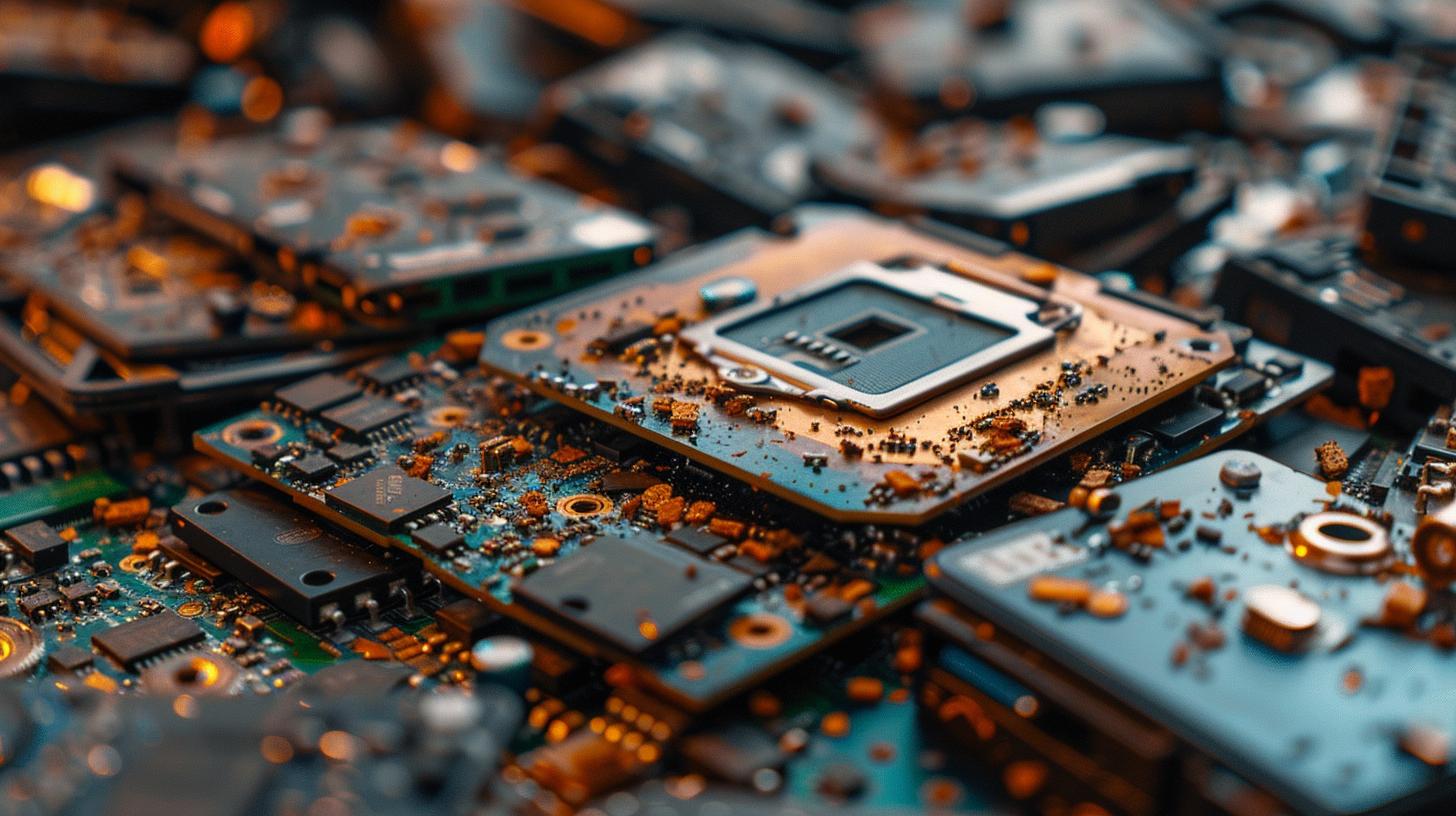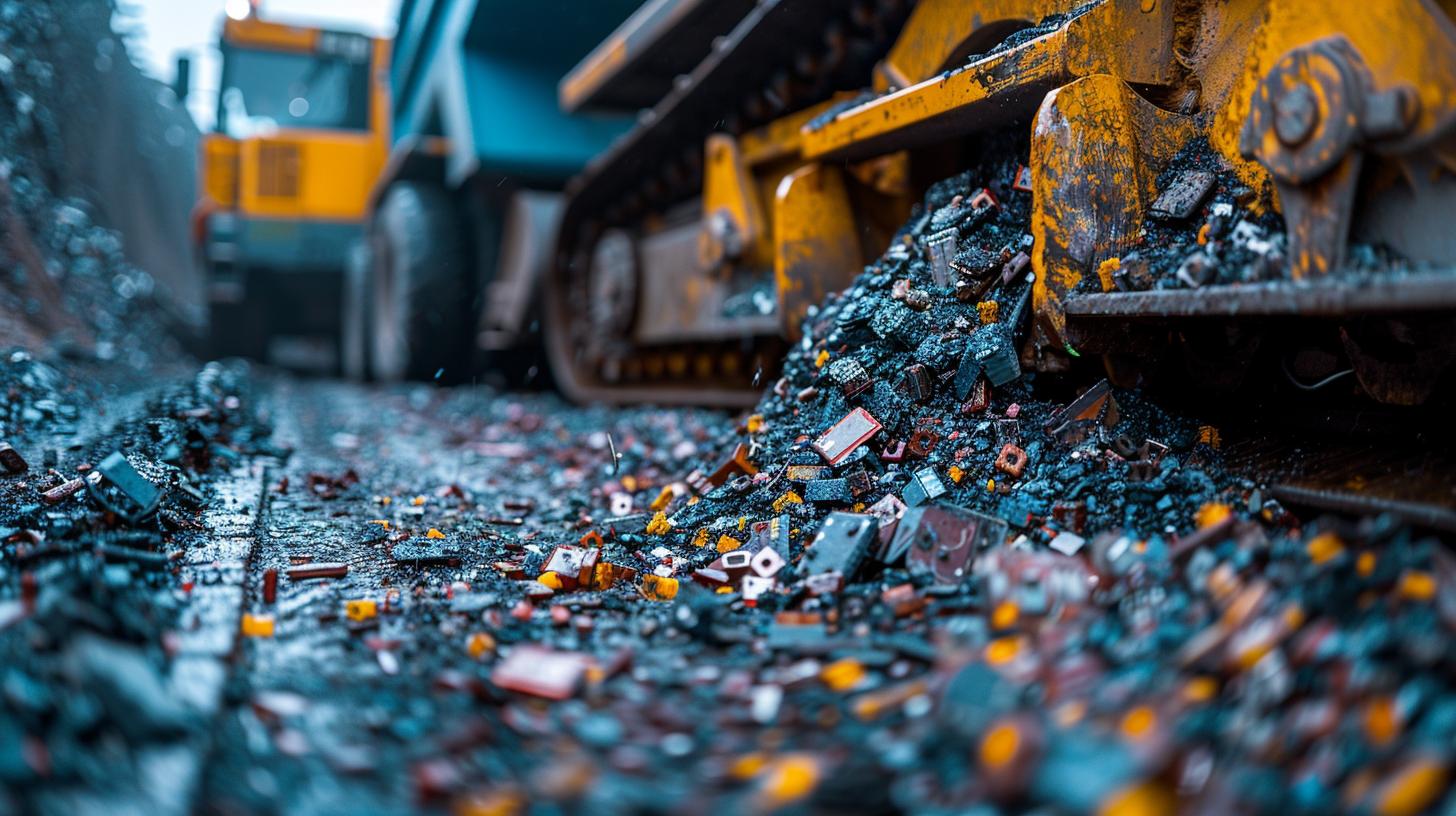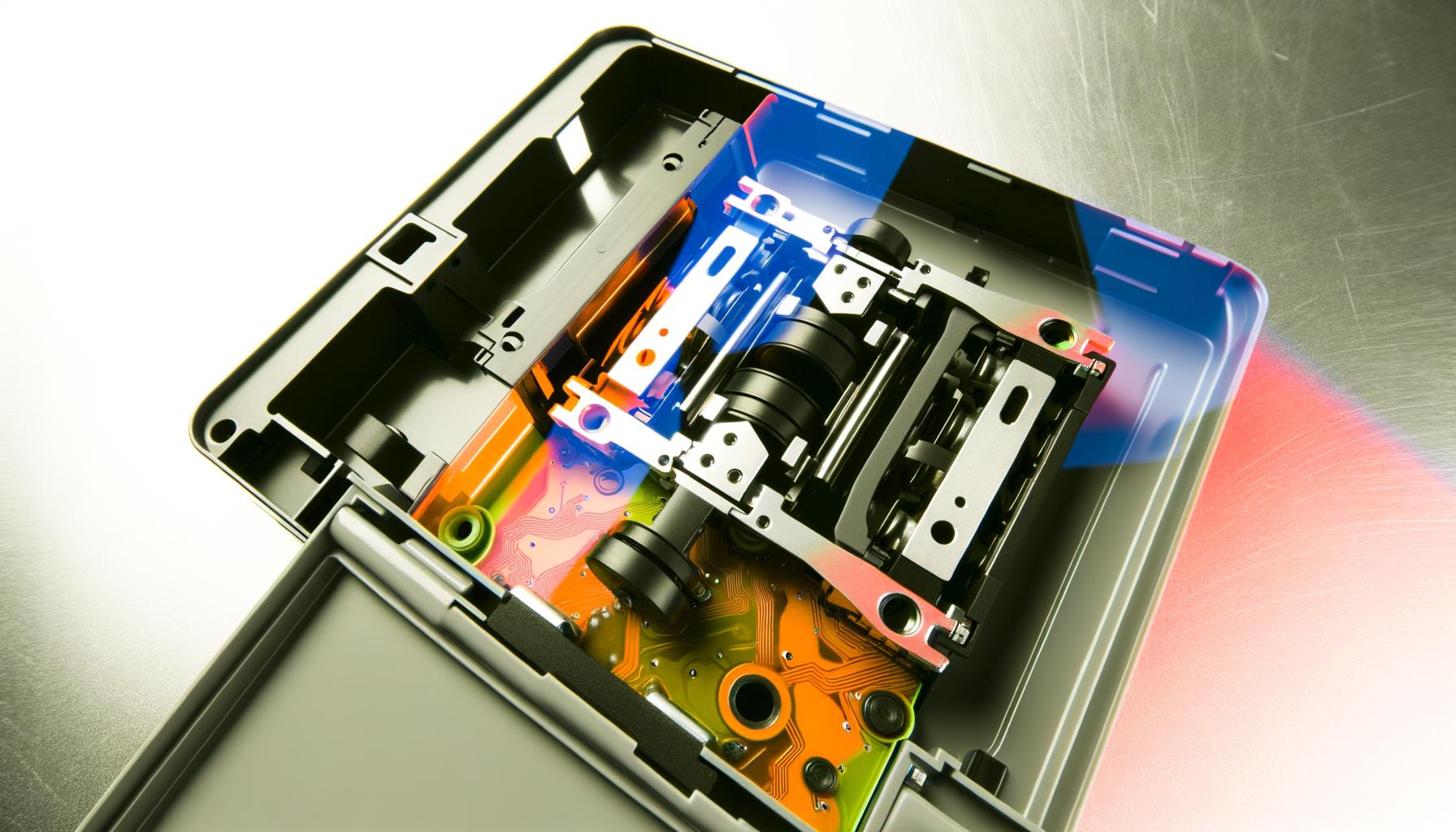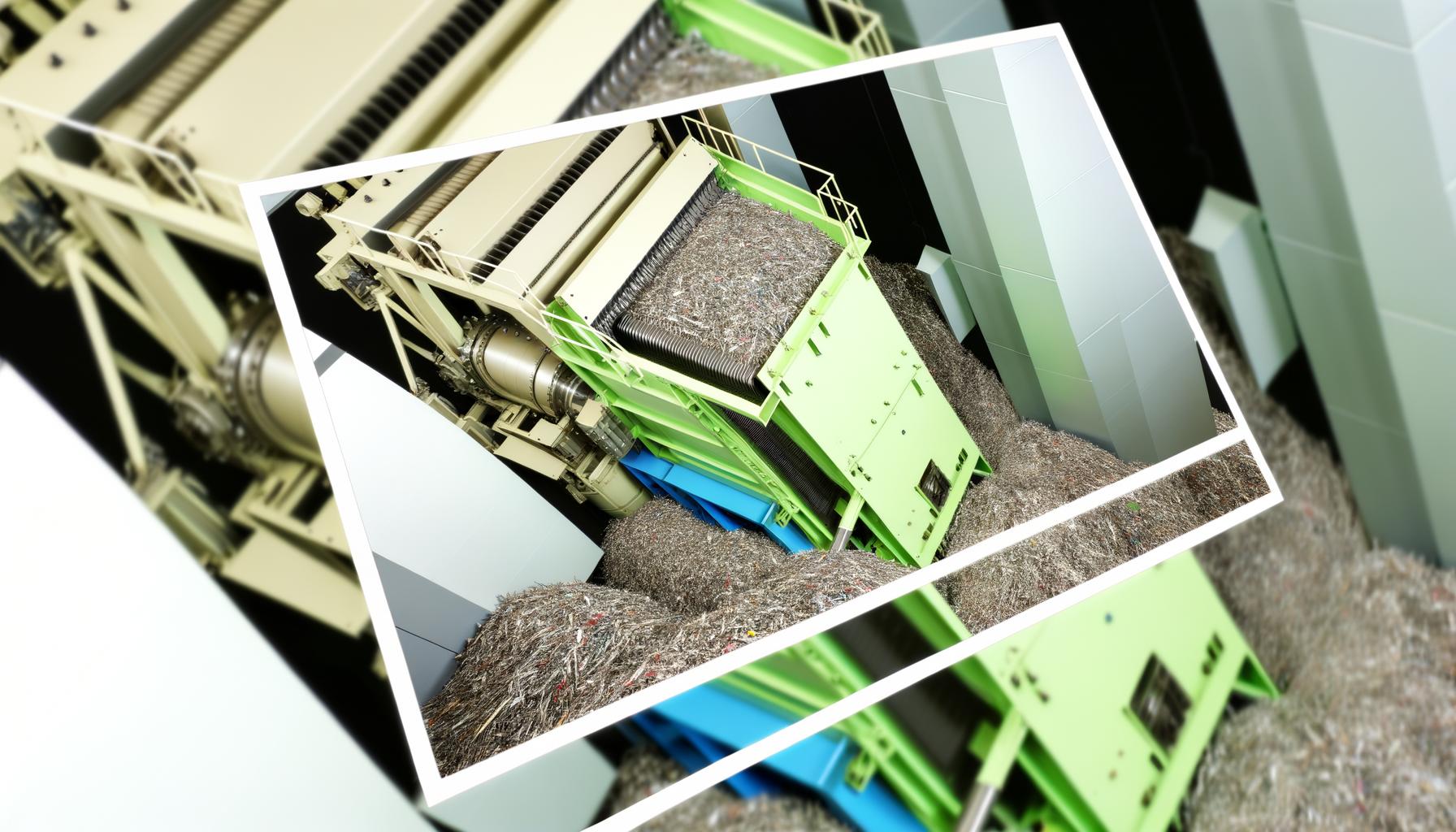In an age where data breaches can cause catastrophic repercussions for individuals and businesses alike, ensuring secure hard drive disposal is not just a recommendation-it’s an imperative safeguard against potential risks. Within the first few lines of an article, the necessity of this practice becomes evident.
As technology pervades every corner of personal and corporate life, the volume of sensitive information stored on hard drives increases by the day. The mere act of disposing such storage devices entails a responsibility to protect that data from falling into the wrong hands.
From financial records to personal emails, each piece of information carries with it a pivotal degree of privacy and confidentiality. Improper disposal methods could lead to that data being recovered by unauthorized parties, sparking issues ranging from identity theft to industrial espionage. Furthermore, simply deleting files or formatting a drive does not equate to data being irretrievably removed-a concept known as data remanence posits that with the right tools, skilled individuals can recover seemingly erased information.
The significance of secure hard drive disposal is also underscored by legal frameworks designed to ensure the protection of personal and corporate data. Laws such as GDPR in Europe, HIPAA in healthcare, and various other national regulations compel compliance; failure to properly dispose of sensitive information can result in substantial fines and damage one’s reputation irreparably.
This component ensures that beyond moral responsibility, there is tangible accountability for entities handling sensitive data when they approach end-of-life equipment management. Recognizing these facets delineates how crucial it is to engage with established methods during the disposition phase-ones that align security with legislated directives on info-security management systems.
Understanding Data Remanence and Its Risks
While many people might believe that simply deleting files or even formatting a hard drive is sufficient for removing data, the reality is far more complex. This leads to the phenomenon of data remanence-residual representation of digital data that remains even after attempts have been made to remove or erase the data. Understanding this concept is crucial because failure to effectively mitigate data remanence can result in unauthorized access and misuse of sensitive information.
What Is Data Remanence?
Data remanence refers to the traces of data that linger on storage devices like hard drives, solid-state drives, USBs, and memory cards despite efforts to delete or sanitize them. These remnants can be recovered using special software and techniques by individuals with malicious intent.
The strength and persistence of residual data depend on a variety of factors, including the method used to store it initially, how it was intended to be deleted, and the physical characteristics of the storage medium itself.
When disposing of a hard drive, merely deleting files or reformatting does not suffice because these actions do not actually erase the information; they simply remove pointers to where the files are stored on the device, leaving the actual bits and bytes relatively intact. It’s only when new data overwrites these old bits that they may become irretrievable without advanced forensic methods.
Types of Information at Risk
Sensitive information left vulnerable due to data remanence can include personal records such as social security numbers, banking information, confidential corporate documents, intellectual property, medical records, legal documentation, passwords, and more. Even seemingly harmless scraps of information can be pieced together by skilled adversaries to construct a larger picture that may compromise personal privacy or corporate security.
Businesses in particular need to exercise caution; a single hard drive could contain hundreds-if not thousands-of records containing personally identifiable information (PII), protected health information (PHI), trade secrets or financial reports that would pose significant risks if exposed. For individuals disposing old personal computers or devices at home, they too must recognize their device may still hold fragments of their digital life which could provide fodder for identity theft if discovered by cybercriminals.
Consequences Illustrated Through Case Studies
There have been numerous instances underscoring the importance of secure hard drive disposal through troubling real-world consequences from neglecting proper procedures. High-profile companies have faced embarrassing and costly breaches when disposed-of hardware was found containing confidential data-an eventuality which often leads to loss in customer trust along with potential legal repercussions under various compliance regimes like GDPR or HIPAA.
Case studies also highlight instances where hard drives purchased second-hand contained enough residual data for buyers-or researchers-to recover previous users’ personal details easily. These examples illustrate why understanding and addressing risks linked with data remanence is paramount in safeguarding against potential security breaches stemming from inadequate secure hard drive disposal practices.
Preparing for Hard Drive Disposal
Before beginning the process of hard drive disposal, it’s crucial to ensure that you’ve backed up any important data. Even if a hard drive is malfunctioning or no longer needed, it might contain vital information that will be necessary in the future. To avoid data loss, perform a thorough inventory of the files on your drive and determine which ones need to be preserved.
Use backup software or simply copy files over to another storage medium such as an external hard drive or cloud storage. Make sure that these backups are done securely to prevent unauthorized access – encrypting your backups can provide an additional layer of protection.
Organizing your data as part of this process can significantly streamline your efforts when disposing of the hard drive. Group files into categories and prioritize what needs to be saved based on both importance and sensitivity.

Document what you’re backing up, so there’s a clear understanding of where everything is located on the new storage medium; this step will save much time and frustration when accessing these files later on. Remember to check for any hidden folders or system files that may also contain important information – they often go overlooked but can store critical data.
Once you have successfully backed up your essential data, it’s wise to verify the integrity and completeness of these backups before proceeding with disposal. You don’t want to discover too late that files were corrupted or didn’t transfer properly.
Run tests where possible, try opening some documents from the backup source, access a few media files, or use verification features provided by backup software tools to confirm successful data replication. Only after ensuring all valuable data has been accurately copied and secured should you move forward with disposing of your old hard drives using secure methods that prevent potential breaches in sensitive information.
Methods of Secure Hard Drive Disposal
When it comes to disposing of an old hard drive, simply throwing it in the trash or hitting “delete” on your files isn’t enough to protect your data. Hard drives contain sensitive information that could potentially be recovered by unauthorized individuals, which is why secure hard drive disposal is crucial. One effective way to ensure complete data obliteration is through hard drive wiping software.
This type of software is designed to overwrite every bit of data with random information, making it nearly impossible for anyone to recover any lingering files. It’s vital, however, to use certified wiping applications that adhere to industry standards such as NIST 800-88 or DoD 5220.22-M.
Another thorough method of secure hard drive disposal is degaussing. This process involves using a high-powered magnet known as a degausser to scramble the magnetic field that stores the data on your hard drive. Degaussing effectively destroys the data encoding pattern, rendering the information irretrievable.
Nevertheless, this method does have its limitations: for starters, it can be costly and requires special equipment. Moreover, degaussed hard drives are not reusable as the process permanently damages them – making this option less viable for those looking for an eco-friendlier approach.
Physical destruction methods are perhaps the most visceral and final form of secure hard drive disposal. Physical methods like shredding turn the entire device into small fragments; crushing creates sufficient force to render the data platters unreadable; and hammering provides a more hands-on approach although it’s less reliable in ensuring complete data destruction across the platter’s surface area.
Despite being very effective at preventing data recovery, these physical techniques also require cautious handling – sharp shards from shattered components can be hazardous.
Additionally, environmental considerations must be taken into account as physical destruction leaves e-waste that must be properly recycled or disposed of according to local regulations. When choosing between these methods, consider factors such as cost, volume of drives needing disposal, environmental policies and whether you need verification of destruction for compliance reasons.
DIY vs Professional Secure Hard Drive Disposal Services
When it comes to secure hard drive disposal, individuals and organizations often find themselves at a crossroads deciding between attempting the process themselves or outsourcing to professional services. DIY methods for erasing or destroying hard drives may first appear cost-effective, but they come with inherent risks.
Without proper tools and techniques, one may fail to completely destroy the data, inadvertently leaving sensitive information retrievable through various means. Moreover, the accuracy and completeness of data destruction done in-house are challenging to verify without specialized expertise.
Professional secure hard drive disposal services offer substantial advantages over DIY approaches. These services typically employ a range of proven methods aligned with industry standards and governmental regulations for data destruction.
They possess both the technical capacity-such as advanced degaussing machines and shredders-and expertise to ensure all remnants of data on hard drives are irreversibly destroyed. Another significant benefit is that these companies often provide certificates of destruction which serve as formal documentation proving compliance with legal requirements; this is crucial for businesses that need to show adherence to specific privacy laws.
| Aspect | Description |
|---|---|
| Certifications | Confirm that the provider has relevant certifications (e.g. NAID). |
| Data Destruction Methods | Inquire about the methods they use (e.g. wiping, degaussing, physical destruction). |
| Documentation | Check if they provide certificates of destruction. |
| Compliance | Evaluate their procedures against legal requirements. |
| Customer Reviews | Leverage insights from past client experiences. |
By comparing these key components among different providers, one can make an informed decision on whom to entrust with such a crucial task as secure hard drive disposal.
Secure Hard Drive Disposal for Businesses
The establishment and maintenance of a robust secure hard drive disposal policy is a critical component of any organization’s data security strategy. A comprehensive policy not only shores up the defenses against data breaches but also ensures adherence to the plethora of data protection laws and regulations that govern the handling of sensitive information. Given the high stakes involved in mishandling data, businesses can ill afford oversights in their disposal practices.

Data protection laws such as GDPR, HIPAA, and FACTA impose stringent standards on how information should be handled and disposed of to protect consumer privacy. Secure hard drive disposal thus becomes a regulatory issue just as much as an IT security concern. Organizations that fail to comply with these regulations face severe penalties, including hefty fines and damage to reputation. It is imperative for businesses to stay informed on relevant legislation and integrate those requirements into their disposal procedures effectively.
One crucial step businesses must undertake is incorporating secure hard drive disposal into their IT asset management plans. This integration allows for seamless tracking, management, and documentation of every stage in the lifecycle of storage media, from acquisition to decommissioning. Keeping meticulous records of each hard drive’s disposition also plays a pivotal role in maintaining compliance and demonstrating due diligence should auditing occur or legal inquiries arise.
| Laws & Regulations | Potential Consequences for Non-Compliance |
|---|---|
| General Data Protection Regulation (GDPR) | Fines up to €20 million or 4% global annual turnover |
| Health Insurance Portability and Accountability Act (HIPAA) | Fines ranging from $100 to $50,000 per violation |
| Fair and Accurate Credit Transactions Act (FACTA) | Civil penalties up to $2,500 per violation; Federal fines up to $1,000 per violation |
In summary, developing a formalized approach toward hard drive disposal within the corporate landscape is non-negotiable. This not only minimizes risk exposure when it pertains to potentially compromising sensitive information but also reinforces an organization’s reputation for responsible data handling among customers and partners alike. Achieving this requires continuous education on evolving legal frameworks overlaid by consistent application of set policies that ensure secure end-of-life treatment for digital storage devices.
Environmental Considerations in the Disposal of Hard Drives
Environmental considerations have become an increasingly important aspect of disposing of electronic waste, including hard drives. It is not enough to ensure that your personal or business data has been irrevocably erased; you also need to consider the impact that improper disposal can have on the environment. The materials within hard drives, if not handled correctly, can be hazardous to ecosystems and human health alike.
- The Environmental Impact of Improper Hard Drive Disposal: Hard drives contain heavy metals like lead, mercury, and cadmium as well as other toxic substances which can leach into the ground and water supplies if thrown into a landfill. Air pollution is another consequence when these devices are improperly burnt. Not only does this release harmful toxins into the atmosphere, but it can also lead to data breaches if the drives are not thoroughly destroyed.
- Responsibly Recycling Components Post-Destruction: After ensuring all sensitive data is removed from a hard drive through wiping, degaussing, or physical destruction methods, recycling is an integral part of secure hard drive disposal. Many components of hard drives such as aluminium casings, printed circuit boards and rare earth magnets can be reclaimed and reused in other products. This reduces the need for new raw materials, conserves energy and decreases greenhouse gas emissions related to manufacturing.
- Working with E-Waste Programs and Certifications for Eco-Friendly Disposal: There are programs and certifications dedicated to responsible e-waste recycling which you should consider when disposing of your hard drives. Organizations such as e-Stewards and R2 Standard provide guidelines for safe electronics recycling practices that protect both workers’ health and the environment.
By partnering with certified e-waste recyclers who comply with these standards, businesses and individuals can ensure their electronic waste is handled sustainably.
In seeking secure hard drive disposal options that are environment-friendly, these considerations serve as a guide towards making informed decisions about how to proceed with safely disposing of old or unwanted technology in a manner that reflects both security diligence and eco-consciousness.
Conclusion
Ensuring the secure disposal of hard drives is an essential practice that encompasses both information security and environmental responsibility. At the heart of this process is the understanding that once data is no longer required, it must be rendered inaccessible to prevent any potential misuse or privacy breaches. Therefore, identifying and implementing the most effective methods for hard drive disposal are fundamental steps in protecting sensitive information.
It’s critical to remember that secure hard drive disposal isn’t just about deleting files or formatting drives; these measures alone do not guarantee that data cannot be recovered. Instead, it calls for employing strategies that are destroyer-proof and align with industry best practices.
The various disposal methods discussed earlier come with their respective pros and cons, and their applicability varies depending on individual or corporate needs. For instance, businesses dealing with highly sensitive information may opt for a combination of wiping techniques followed by physical destruction to ensure no data remnants are left intact.
In contrast, individuals with less stringent requirements may find software-based solutions sufficient for their needs when supplemented by environmentally sound recycling options. The focus should always be on selecting a method that doesn’t leave your data vulnerable yet acknowledges the importance of minimizing electronic waste.

In adopting a holistic approach towards secure hard drive disposal, it’s also crucial to incorporate these practices into wider operational protocols seamlessly. This encompasses educating employees about the significance of secure data handling and proper end-of-life media management, staying attuned to changes in compliance regulations, and consistently evaluating the effectiveness of employed disposal methods.
Leveraging these best practices results in a robust framework where information security dovetails with ecological concerns – ensuring not just peace of mind but also contributing towards a more sustainable future for technology use and disposal.
Additional Resources and Further Reading
In wrapping up this comprehensive guide to secure hard drive disposal, it’s vital to reiterate the significance of implementing thorough and reliable data destruction methods. We have explored the various risks associated with inadequate disposal and assessed different techniques to ensure that sensitive information is irretrievably destroyed. Throughout this journey, we’ve emphasized the crucial balance between maintaining strict security measures and being environmentally conscious – both aspects are fundamental when disposing of hardware.
It is strongly advised that individuals and businesses alike keep themselves informed about evolving data protection laws and remain abreast of advancements in cybersecurity practices. This not only helps in bolstering defenses against data breaches but also in ensuring compliance with legal standards. For further reading on these topics, there are abundant resources available online, including government websites detailing data protection acts and regulations which provide legal frameworks you need to know.
Online forums and professional networks can offer a wealth of advice, real-world insights, rife with professionals who have tackled similar challenges in secure hard drive disposal. Engaging with these communities can be incredibly beneficial for staying up-to-date on best practices or even discovering innovative solutions to common problems faced during the data disposal process. Cybersecurity literature is another avenue where one can delve deeper into strategies for effectively managing digital information risks.
Remember, while the act of disposing of hard drives may seem like a final step, it is actually part of a larger commitment to responsible information management – an ongoing process that requires continuous attention and adaptation. Keep learning, remain vigilant towards potential threats, make use of professional services when necessary, and always strive for a methodical approach that safeguards both your data privacy and the wellbeing of our planet.
Frequently Asked Questions
How Do You Securely Dispose of Hard Drives?
To securely dispose of hard drives, one should first ensure that all data is permanently erased using software designed to wipe the drive multiple times. Physical destruction of the drive is also necessary; this can be achieved by using a specialized hard drive shredder or by drilling holes into the drive, ideally through the platters, rendering it unusable.
What Is the Most Secure Way to Dispose of a Hard Drive Containing Sensitive Data?
The most secure way to dispose of a hard drive containing sensitive data is to combine methods of data sanitization with physical destruction. This involves using data destruction software to overwrite all sectors of the drive several times and then physically destroying it by disintegrating, melting, or crushing it to ensure that no data can be recovered.
How Do You Ensure a Hard Drive Is Destroyed?
Ensuring a hard drive is destroyed typically involves both demagnetizing the drive with a degausser and rendering it physically inoperable. After wiping its data, one should take the hard drive to a facility where it can be crushed or shredded or otherwise apply severe physical damage at home by bending, crushing with a hammer, or drilling through its platters.
What Can I Do With Unwanted Hard Drives?
Unwanted hard drives can serve various purposes besides storing old files. They might be repurposed as external storage devices when placed in an enclosure, used as secondary drives for additional space in your PC build, donated after secure wiping if they still function well, or submitted to electronic waste recycling programs that handle e-waste responsibly.
Should I Destroy Hard Drive Before Recycling?
It’s advisable to destroy your hard drive before recycling due to potential risks associated with sensitive information recovery from inadequately disposed drives. Utilizing professional services that securely wipe and destroy drives mitigates identity theft risk and ensures compliance with privacy laws concerning consumer information handling.
Is It Safe to Throw Away Laptop After Removing Hard Drive?
It is relatively safe to throw away a laptop after removing the hard drive since the majority of personal data resides on this component. However, other parts may retain some user information such as serial numbers which could pose minimal risks; hence complete retrieval assurance requires deep erasure protocols before disposal of remaining laptop components.
Should I Throw Away My Hard Drive?
Throwing away your hard drive might expose you to risks if not done properly because someone could potentially recover your personal data from it unless thoroughly destroyed or wiped clean beforehand. Secure disposal practices involve either using certified software-based wiping utilities or physically destroying the hard disk beyond any scope of repair or recovery.
What Is the Most Effective Way to Permanently Remove Data From a HDD?
The most effective means of permanently removing data from an HDD involve software tools specifically made for high-standard eraser procedures often referred to as disk wipes coupled with physical dismantling and subsequent destruction techniques like shredding—a twofold assurance none can recover what was once stored on said device.




